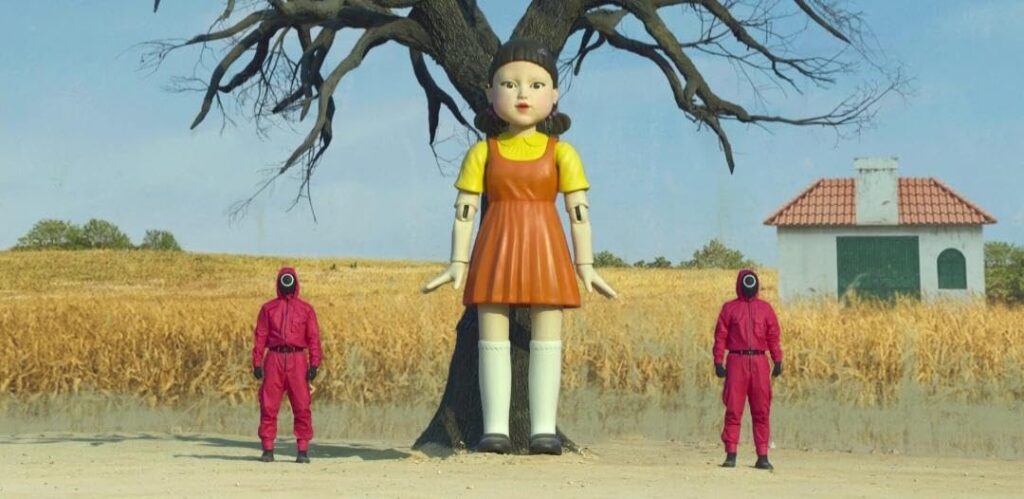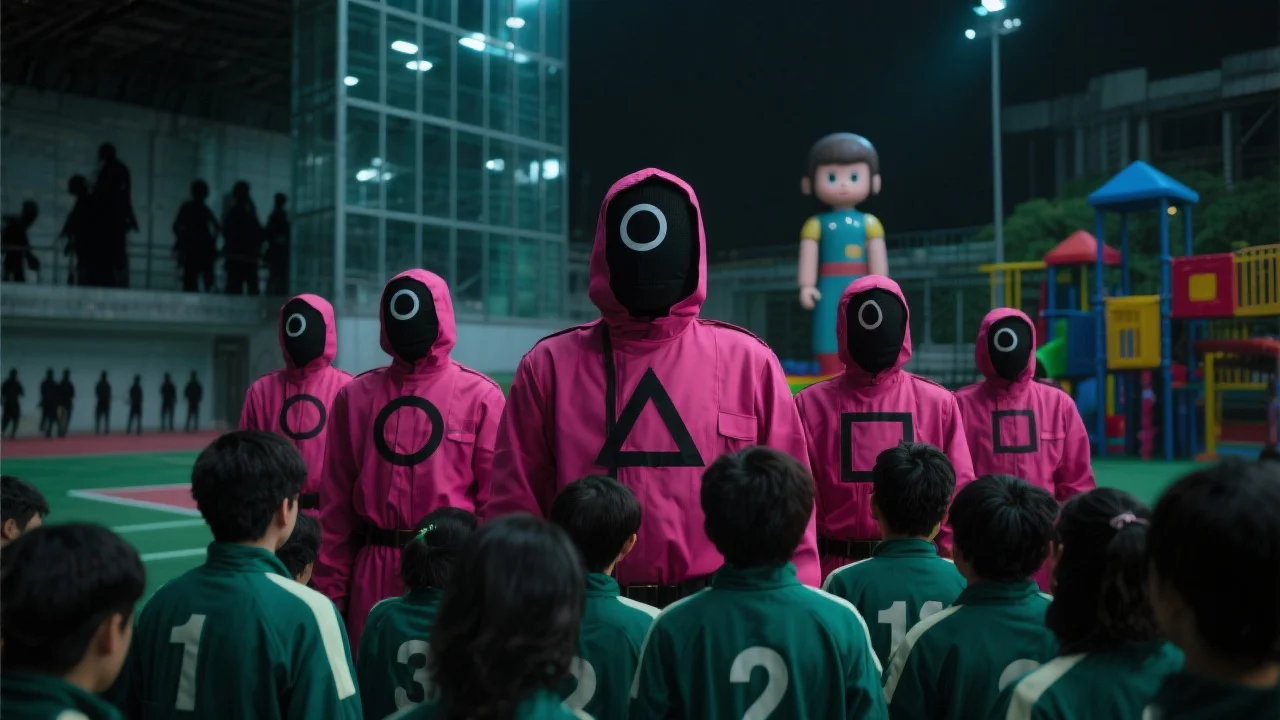Since its release, Squid Game has captivated audiences worldwide with its gripping storyline, intense visuals, and unforgettable characters. But beyond the surface-level thrills, the series is packed with hidden symbolism and deeper meanings that enrich the viewing experience. Let’s dive into the subtle details and powerful metaphors that make Squid Game more than just a survival drama.
The Colors of Power and Control

One of the most striking elements in Squid Game is its use of color. The guards’ pink uniforms and the players’ green tracksuits are not just for aesthetics—they represent the stark divide between those in control and those who are powerless. The color red (or pink) is often associated with authority and danger, while green symbolizes hope and the struggle for survival. The use of these colors visually reinforces the show’s themes of hierarchy and desperation.
“The color palette in Squid Game is a visual metaphor for the social divide,” says art director Chae Kyung-sun in an interview with Netflix Korea.
The Circle, Triangle, and Square

The shapes on the guards’ masks—circle, triangle, and square—are more than just mysterious symbols. They represent different ranks within the organization, echoing the structure of a video game or a strict military hierarchy. Some fans have also noted that these shapes resemble the buttons on a PlayStation controller, subtly hinting at the idea of the players being manipulated like characters in a game.
Childhood Games as Social Commentary

Each deadly game in the series is based on a traditional Korean children’s game. This choice is deeply symbolic, highlighting the loss of innocence and the harsh realities of adulthood. The games serve as metaphors for the competitive nature of society, where only the strongest—or luckiest—survive. The nostalgia of childhood is contrasted with the brutality of the competition, making the stakes feel even more personal and tragic.
The Giant Doll and Surveillance

The unforgettable giant doll in the “Red Light, Green Light” game is more than just a creepy prop. It symbolizes the ever-present surveillance and lack of privacy in modern society. The doll’s unblinking gaze and ability to detect the slightest movement reflect the constant scrutiny faced by the characters—and, by extension, by people in real life.
The Number 456

The protagonist, Seong Gi-hun, is player 456—the last to join the game. The number 456 is symbolic of being at the very bottom, the underdog with the least power. His journey through the games mirrors the struggle of those marginalized by society, fighting for a chance at redemption and dignity.
The VIPs and Social Critique

The masked VIPs who watch the games for entertainment are a direct critique of the wealthy elite. Their detachment and lack of empathy highlight the growing divide between the rich and the poor. The show uses their presence to question the morality of a society that allows suffering to become a spectacle.
Conclusion
Squid Game is a masterclass in visual storytelling and social commentary. Its hidden symbolism invites viewers to look beyond the surface and reflect on the deeper issues at play—inequality, power, and the human condition. Next time you watch, keep an eye out for these subtle details; you might discover even more layers to this global sensation.









